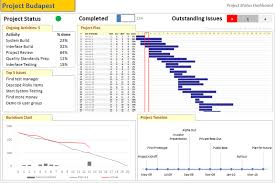Best Practice #1 – Do not
implement a “Craft Approach”
A blended learning
approach may not be a natural fit for all face to face instructors. Therefore, the instructor may have the
tendency to take what has worked for him/her in the face to face environment
and develop the course and materials based on that experience. However, models for traditional delivery and
models for online delivery are different and should not be seen as one of the
same (Moller, Foshay and Huett, 2008).
According to Moller, Foshay and Huett, 2008, utilizing this approach
leads to the following pitfalls:
·
May prevent the utilization of a wealth of
available technology in order to help with student interaction, multiple levels
of communication, definition of new types of engaging assignments and
implementation of appropriate evaluation techniques.
·
Conversion efforts may be very time consuming to
the instructor; leading to a feeling of non-accomplishment and isolation
·
Approach is not rooted in solid learning
theories
·
Approach may continue to be teacher centered as
opposed to learner centered
Best Practice # 2 – Success
is in ADDIE
So you’ve successfully
gone through all steps in ADDIE and designed your face to face course. As you are now converting to a blended
environment, you must go back through the steps in ADDIE; this time with a
blended learning mentality. Here are a
few specific things to keep in mind as you work your way through the ADDIE
model with blended learning in mind:
Analysis:
·
Find out more about your learners and assess
their characteristics and attitudes; including attitude towards technology and
the online learning environment (Simonson, Smaldino, Albright & Zvacek,
2012).
·
Revisit learning objectives for the course
(Shibley, Amaral, Shank & Shibley, 2011)
·
Take the opportunity to reaffirm learning
objectives by sharing them with other subject matter experts and gathering
their feedback (Shibley, Amaral, Shank & Shibley, 2011)
·
Utilize previous qualitative and quantitative
research results in order to identify ways you will use the blended approach to
enhance the learning experience (Simonson, Smaldino, Albright & Zvacek,
2012).
·
Assess what is to be improved or what is not
working in the face to face environment (Shibley, Amaral, Shank & Shibley,
2011).
·
Assess the type of available technology, skills
support structure and budget within your environment
Design:
·
Based on objectives, determine amount of face to
face vs. online learning distribution for the course (Shibley, Amaral, Shank
& Shibley, 2011).
·
Develop instructional strategies that will
enhance student learning and interaction within the course utilizing available
technology
·
Look for opportunities of broadening learning
outcomes through the blended approach; to include the areas of critical
thinking, team work and logical analysis (Shibley, Amaral, Shank & Shibley,
2011).
·
Design strategies to create a collaborative
learning environment
·
Design strategy and techniques to help students
learn online; including orientations, scaffolding and motivational techniques
(Lim, 2004)
Development:
·
Based on analysis and design specification,
develop all instruments specific to your blended training. These may include a class guide, syllabus,
student resources, online resources, tutorials, podcasts, etc. (Shibley, Amaral, Shank & Shibley, 2011).
·
Ensure that all developed material specifically
addresses the learning goals (Shibley, Amaral, Shank & Shibley, 2011).
·
Ensure appropriate linkages, leveraging and
support between online and face to face portions of the course (Shibley,
Amaral, Shank & Shibley, 2011).
·
Establish grading criteria for online as well as
face to face sections of the course (Shibley, Amaral, Shank & Shibley,
2011).
·
Evaluate and implement appropriate CMS
(Simonson, Smaldino, Albright & Zvacek, 2012).
Implementation:
·
Begin student collaboration as soon as course
begins through the use of icebreakers, setting students up in teams, etc. (
Shibley, Amaral, Shank & Shibley, 2011).
·
Communicate equipment and technical requirements
ahead of course start
·
Provide student with appropriate resources to
address technical difficulties
·
Implement strategy to communicate course expectations,
learner responsibilities, methods for communicating with instructor, grading
mechanism, etc. (Shibley, Amaral, Shank & Shibley, 2011).
Evaluation:
·
Ensure there is a summative evaluation process
in order to possibly correct course issues prior to future implementations (Simonson,
Smaldino, Albright & Zvacek, 2012).
·
Establish success criteria specific to the
blended course (Morrison, Ross, Kalman
& Kemp, 2011)
·
Ensure implementation of Kirkpatrick’s
Evaluation approach or AEIOU approach in order to measure success of the
program (Simonson, Smaldino, Albright & Zvacek, 2012)
·
Particularly in a business environment,
establish measurements for ROI (Simonson, Smaldino, Albright & Zvacek,
2012)
Best Practice # 3: Stop
Teaching and FACILITATE
Newsflash!!!! Once you decided to implement blended learning,
your role as an instructor drastically changed.
It is no longer about what you have to say; but how you lead learners in
the path to acquiring the knowledge they need to obtain. Not only are you now responsible for ensuring
your students learn, but also for keeping them engaged and learning in a
collaborative environment. The
instructor should take a back seat and skillfully guide the learners in their
process by monitoring online discussion and encouraging participants to look at
the material in the right perspective; while skillfully steering and guiding
conversations in the right direction (Easton, 2000). Here are a few tips from Lim, 2004 on how to
do that:
·
Participate actively in discussions by answering
questions and providing feedback
·
Pose conflicting questions that elicit
reflection and critical thinking
·
Keep discussions focused
·
Draw conclusions while contributing advanced
content knowledge and insight
·
Recommend resources for extension of learning
while responding to learner questions and providing feedback.
·
Set meaningful tasks that are meaningful to
learners and promote active participation in discussions
Best Practice # 4 - No Success Without Engagement
Your good looks, charming personality and excellent spoken
communication abilities will no longer maintain your students engaged in the
online environment. Success of your
course will be contingent upon your ability to maintain your learners engaged
during the online section of the course.
Lim, 2004, recommends the following in order to maintain your learners
engaged in the course:
·
Accommodate the learning process to the targeted
learner
·
Ensure that activities are relevant to the
learner through contextualization of such activities
·
Ensure that learners have the knowledge to learn
from the learning environment
·
Ensure learners have access to technology,
resources and supporting tools
·
Avoid cognitive overload by not overwhelming the
learner
·
Ensure online discussion and the overall online
environment is appropriately facilitated
·
Where possible, utilize authentic activities
based on life events the learner can relate to which focus on applying new
knowledge and skills
·
Provide students with timely performance
feedback
Best Practice #5 – Organization Counts
1.
Upload a syllabus as the first module of the
course
2.
Lay out the expectations for students as to how
they will communicate with the instructor and with other students
3.
Use the calendar feature to show assignment due
dates and other important dates
4.
Use Modules to organize course materials and
activities
5.
Properly utilize grade book features in order to
give students
Best Practice # 6 – Use Technology Wisely
Technology will play a big part in
the successful implementation of your blended learning solution. However, “Technology is not the issue. How and what we want the learners to learn is
the issue and technology is the tool (Simonson, Smaldino, Albright &
Zvacek, 2012 p. 172). As such, here are
a few tips as recommended by (Simonson, Smaldino, Albright & Zvacek, 2012):
·
Quality design of learning activities is
important and technology should be used to support it.
·
Each technology has its own strength and
weakness. There is no super technology and a combination of technologies may be
required.
·
Usage of technology may be expensive. Ensure appropriate balance between required
use and available budget.
·
Keep in mind student numbers. It may affect your choice of technology usage
·
Keep in mind that teachers may need training in
technologies used
·
Teamwork is important. More than likely, you will not be able to
handle all aspect of technology on your own.
Reach out to technology specialists for help.
References:
Conlan, J., Grabowski, S., & Smith, K. (2003).
Adult learning. Emerging perspectives
on learning, teaching, and technology. Retrieved from http://projects. coe.
uga. edu/epltt.
Easton, S. S. (2003). Clarifying the instructor's
role in online distance learning. Communication
Education, 52(2),
87-105.
Lim, C. P. (2004). Engaging learners in online
learning environments. TechTrends,
48(4), 16-23.
Moller, L., Foshay, W., &
Huett, J. (2008). The evolution of distance education: Implications for
instructional design on the potential of the web (Part 2: Higher education). TechTrends, 52(4), 66-70.
Mortera-Gutiérrez, F. (2006). Faculty best
practices using blended learning in e-learning and face-to-face instruction. International Journal on E-learning, 5(3), 313-337.
Simonson, M., Smaldino, S.,
Albright, M., & Zvacek, S. (2012). Teaching
and learning at a distance: Foundations of distance education (5th ed.)
Boston, MA: Pearson.



 “As a matter of fact, it
is very clear that instruction delivered to distant learners is effective and
that learning outcomes can be successfully attained when offered to students at
a distance” (Simonson, Smaldino, Albright & Zvacek, 2012).
“As a matter of fact, it
is very clear that instruction delivered to distant learners is effective and
that learning outcomes can be successfully attained when offered to students at
a distance” (Simonson, Smaldino, Albright & Zvacek, 2012).